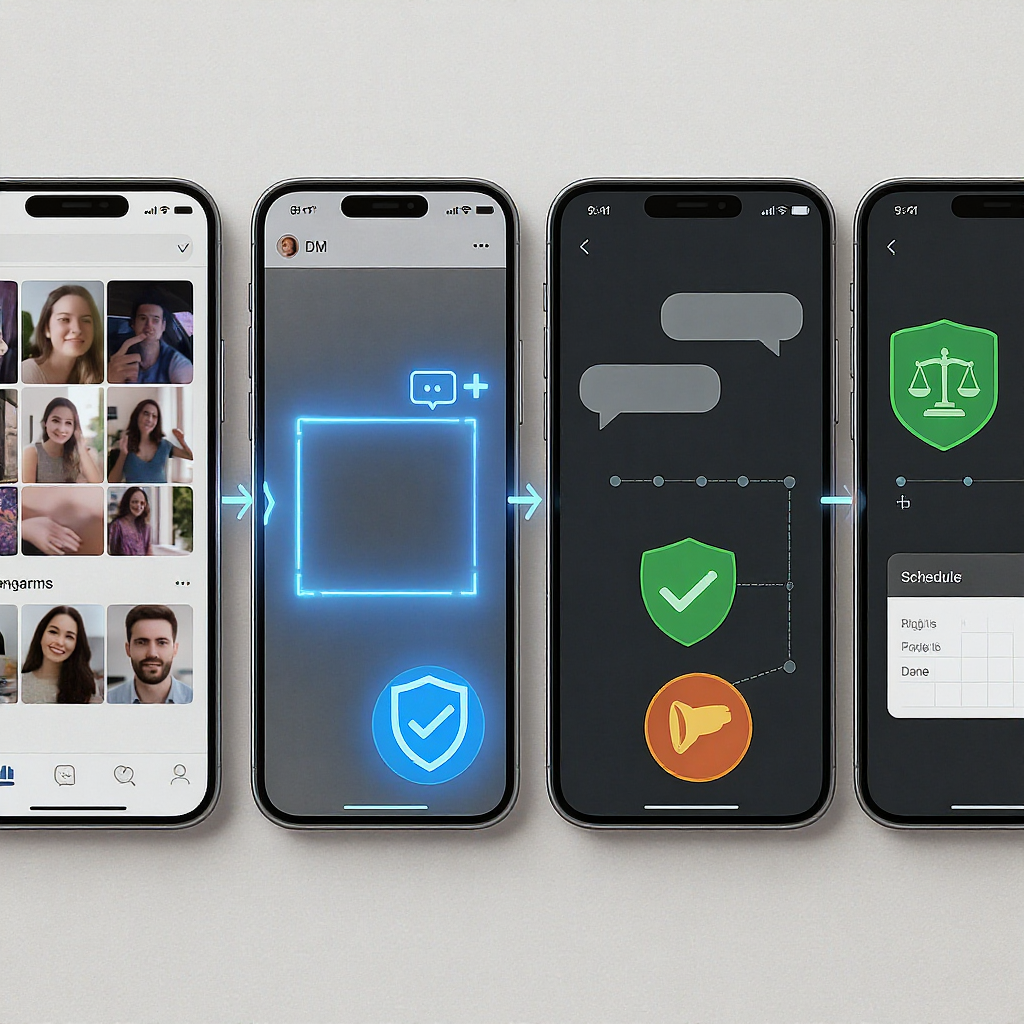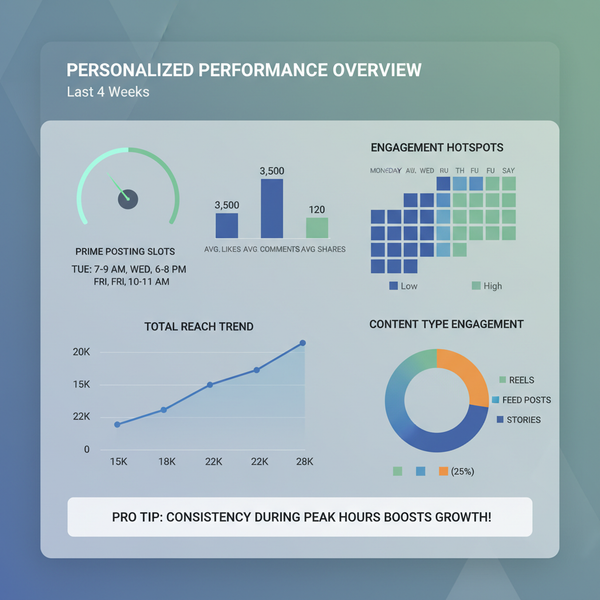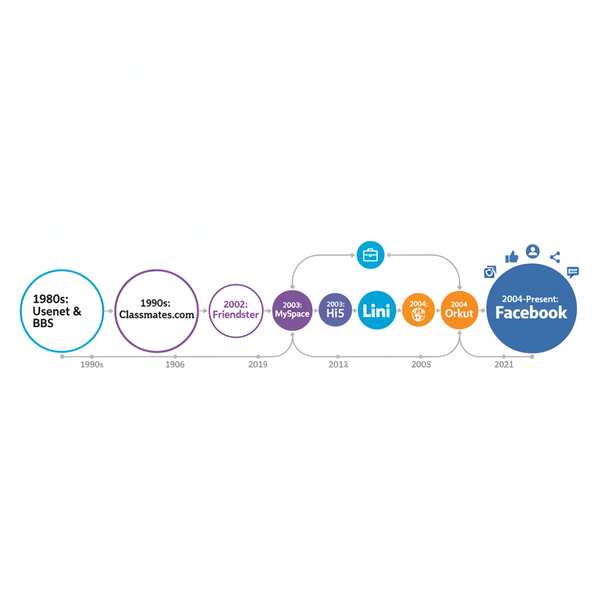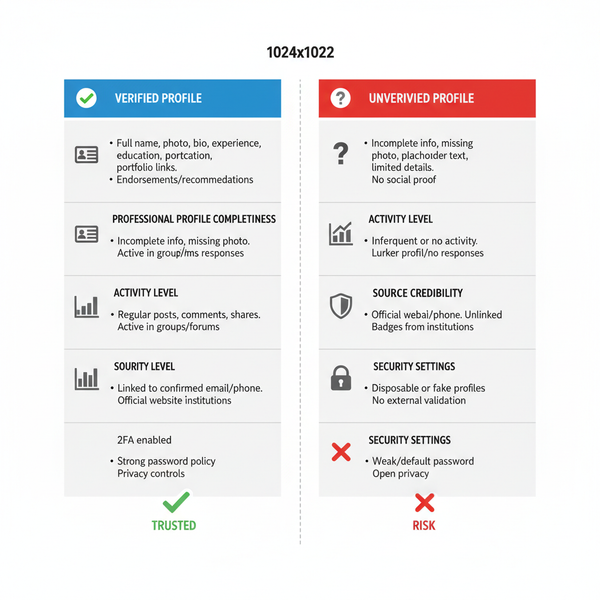How to Share User-Generated Content on Social Media: A Practical Playbook
A practical playbook for sharing UGC on social media: get permissions, disclosures, and credit right; source at scale to boost trust, cut costs, be compliant.

How to Share User-Generated Content on Social Media: A Practical Playbook


User-generated content (UGC) is any text, image, video, review, or creative made by consumers, employees, or community members—not the brand’s internal team. When you share user-generated content on social media, you harness authentic peer voices that drive trust, provide social proof, and lower content production costs. This practical playbook shows you how to do it legally, ethically, and at scale—without losing brand safety or creator goodwill.
Note: This guide shares best practices, not legal advice. Always consult counsel for your jurisdiction and industry.
Why UGC Works (and Where It Fits in the Funnel)
UGC amplifies authentic advocacy:
- Trust and social proof: People believe people like them. UGC validates claims with lived experience.
- Lower costs and higher velocity: Community-made assets reduce production cycles and fill your calendar with fresh formats.
- Full-funnel impact:
- Discovery: Hashtags, mentions, and shares expand reach.
- Engagement: Comments and saves increase session depth and platform signals.
- Conversion: Reviews, tutorials, and unboxings reduce uncertainty and drive clicks.
- Risks to manage: Copyright violations, privacy issues, brand safety misalignment, misattribution, and potential backlash if creators feel exploited.
Legal and Ethical Foundations
Get your legal and ethical house in order before you share user-generated content on social media.
- Permission and rights:
- Obtain explicit permission for each asset and intended use (organic, paid, website, email, OOH).
- Capture rights duration, geographic scope, and ability to edit/derive.
- Save evidence of consent (screenshot of approval, contract, platform rights workflow).
- Copyright and model releases:
- Copyright belongs to the creator by default; get license terms in writing.
- If identifiable people appear, secure a model release; creators can’t always license the likeness of others without their consent.
- Minors and private accounts:
- For minors, obtain verifiable parental/guardian consent and follow local laws (e.g., COPPA-like regimes).
- Do not repost from private accounts without explicit permission; treat DMs as private unless consented.
- FTC/ASA disclosures:
- If content is incentivized (payment, free product, affiliate links), ensure clear, conspicuous disclosures (#ad, Ad in title overlays).
- Don’t bury disclosures in collapsed captions or off-platform pages.
- Privacy and PII:
- Redact or avoid posting content containing addresses, emails, order numbers, license plates, medical or financial info.
- Proper crediting:
- Credit creators visibly (tag handles, include name in captions).
- Honor removal requests promptly; enable an easy takedown path.
Sample rights request DM/comment
Hi {Name}! We love your post and would like to feature it on our social channels and website, with credit to you. Reply “I AGREE” to grant us a non-exclusive, royalty-free license to use your content across our channels for 24 months. Full terms: example.com/ugc-terms. If you’re OK with this, please reply “I AGREE.” Thank you!Finding and Sourcing UGC at Scale
Build repeatable engines that surface quality UGC regularly.
- Branded hashtags and CTAs: Promote a unique hashtag and end posts with prompts (e.g., “Share your setup with #BrandBuilds”).
- Social listening: Monitor mentions, tags, keywords, and sentiment to discover emerging content themes.
- Community prompts and challenges: Weekly themes, before/after challenges, or creator spotlights.
- Employee and customer advocacy: Equip internal and customer champions with content guidelines and easy share kits.
- Reviews and unboxings: Encourage public reviews on retail pages and collect rights to syndicate.
- Events and pop-ups: Track event-specific hashtags; set up on-site capture booths with instant rights flows.
- UGC marketplaces and ambassador networks: Tap platforms that match brands with creators at various budget tiers.
Incentivizing and Recognizing Creators (Without Exploitation)
Motivate participation while protecting authenticity.
- Clear contribution guidelines: Format, safety, and community standards to minimize moderation friction.
- Fair rewards:
- Features and shout-outs with links
- Product gifting with value parity
- Paid commissions or flat fees for usage beyond organic reposts
- Tiered ambassador programs: Levels with increasing perks (early access, affiliate codes, co-creation opportunities).
- Surprise-and-delight: Random upgrades, personalized thank-yous, behind-the-scenes access.
- Maintain autonomy: Don’t over-script; preserve the creator’s voice, and allow opt-outs without penalty.
Curation and Brand Safety Standards
Create a defensible, repeatable rubric to decide what to share.
- Selection criteria:
- Alignment to brand voice and values
- Representation: Diversity across identities, body types, geographies, and abilities
- Accessibility: Provide alt text, captions, high-contrast visuals, readable text overlays
- Technical quality: Resolution, audio clarity, stable framing
- Context and facts: Verify claims; avoid medical/financial advice unless approved
- Safety filters:
- Profanity, NSFW, hate speech, illegal acts, and disallowed product contexts
- Avoid sensitive news cycles or tragedy-adjacent posts; consult a sensitivity review checklist
- Documentation: Record decision rationale for approvals/rejections to improve consistency.
Platform-by-Platform Tactics
Use native mechanics to maximize creator credit and reach.
| Platform | Key UGC Moves | Rights/Tagging Notes |
|---|---|---|
| Collab posts, Stories reshares, Reels remixes | Use Collab to co-publish; request rights for paid usage; tag creator in post and Reel | |
| TikTok | Duet/Stitch, trend participation, playlist curation | Credit in caption and on-screen; secure permission for compilations and ads; use original audio attribution |
| YouTube/Shorts | UGC compilations, community posts, featured creator series | Written licenses for clips; list creators in description with timestamps; avoid Content ID issues |
| X/Twitter | Quote retweets, threads, Moments-style collections | Ask before embedding screenshots; credit handle; beware private account screenshots |
| Group spotlights, Page reshares, event galleries | Follow Group rules; get explicit group member consent for cross-posts | |
| Employee spotlights, customer case snaps, re-posts | Obtain company permission if showcasing workplaces; avoid confidential info | |
| Idea Pins, curated boards, creator collabs | Credit in Pin title/description; rights for rich pins and off-Pinterest usage |
Practical Tips
- Instagram: Use “Invite Collaborator” so content appears on both profiles. For Stories, add alt text and stickers linking to the creator.
- TikTok: Duet/Stitch with framing commentary. Don’t re-upload watermarked videos to other platforms for ads without rights.
- YouTube: If producing compilations, aim for fair use only with proper transformative commentary—and still get licenses.
- X/Twitter: Quote-retweet to preserve original context and conversation thread.
- LinkedIn: Ask employees to share their own stories; avoid pressuring participation.
Workflow and Governance
Operationalize from discovery to publish.

- Discovery
- Sources: Listening dashboards, hashtags, DMs, Groups, reviews.
- Triage: Score against brand and safety criteria.
- Permission and rights capture
- Outreach using pre-approved templates.
- Log responses with timestamps and terms.
- For minors/influencers: route to legal review.
- Intake and DAM
- Store assets in a DAM with tags: creator handle, platform, rights scope, expiry date, region, product, campaign, accessibility status (captions/alt text).
- Generate alt text and captions; verify accuracy.
- Editing and localization
- Light edits: trimming, subtitles, color correction (avoid altering meaning).
- Localize captions and overlays; ensure disclosures translate accurately.
- Approvals
- Route through brand, legal (if needed), and community leads.
- Maintain an approval SLA to keep UGC timely.
- Scheduling and placement
- Slot into your content calendar; balance UGC with brand-produced content.
- Choose placements: organic feed, Stories/Reels/Shorts, paid whitelisting, email embeds, landing pages.
- Publish and engage
- Tag creators, pin comments, and respond to audience questions.
- Encourage saves/shares with clear CTAs.
- Monitor, escalate, and archive
- Track performance and sentiment.
- Escalate issues via a crisis playbook (ownership, response templates, legal contact).
- Archive assets upon rights expiry.
Example rights record (store in your DAM/CRM)
{
"asset_id": "ugc_2025_09_1234",
"creator_handle": "@alex_makes",
"platform": "Instagram",
"license_type": "non-exclusive",
"usage": ["organic", "paid-social", "web"],
"territory": "global",
"duration_months": 24,
"alterations_allowed": true,
"obtained_via": "comment consent",
"consent_proof_url": "https://dam.example.com/consents/ugc_2025_09_1234",
"expiry_date": "2027-09-15"
}Measurement and Attribution
Map metrics to goals to prove impact beyond vanity counts.
| Objective | Primary KPIs | Secondary Signals |
|---|---|---|
| Reach & discovery | Impressions, unique reach, follower growth | Share rate, hashtag reach, creator audience overlap |
| Engagement | Engagement rate (by reach), saves, comments | Average watch time, completion rate, sentiment |
| Traffic | CTR, sessions, UTM clicks | Time on site, bounce rate by UGC landing pages |
| Conversion | Assisted conversions, last-click conversions | CAC, ROAS, LTV by creator cohort |
| Brand lift | Surveyed awareness/consideration | Positive sentiment shift, share of voice |
- UTM discipline: Append UTMs to link-in-bio destinations and Story links to isolate UGC impact.
https://example.com/collection?utm_source=instagram&utm_medium=ugc&utm_campaign=summer25&utm_content=@alex_makes_reel01Tools and Tech Stack
Select tools that fit your scale and risk profile.
| Category | Examples | What to Look For |
|---|---|---|
| Social listening | Brandwatch, Sprinklr, Meltwater | Robust query logic, sentiment accuracy, image recognition, alerting |
| UGC rights & curation | TINT, Pixlee TurnTo, Bazaarvoice | Rights workflows, consent vault, moderation queues, ecommerce syndication |
| Community hubs | Discord, Circle, Geneva | Roles/permissions, threads, event tools, integrations |
| Scheduling suites | Sprout Social, Later, Hootsuite | Approval chains, asset libraries, first-comment posting, alt text support |
| Link-in-bio | Linktree, Later Linkin.bio, Beacons | UTM templates, storefront modules, analytics |
| Analytics | GA4, Looker Studio, Supermetrics | Cross-channel connectors, cohort/retention, privacy controls |
| Automation | Zapier, Make (Integromat) | API depth, error handling, rate limit management |
| DAM | Bynder, Brandfolder, Airtable | Custom metadata, expirations, permissions, audit trails |
Budget Tips
- Start with manual workflows and free/low-cost tiers; upgrade when legal exposure and volume justify.
- Centralize data (e.g., Airtable or Notion) before layering premium suites.
- Pilot with one region/platform to prove ROI, then scale.
Common Pitfalls and Crisis Management
Avoid these traps when you share user-generated content on social media.
- Posting without permission: Never assume a tag equals consent.
- Misattribution: Always credit handles; correct mistakes publicly and promptly.
- Over-polished “UGC”: Heavy editing can ruin authenticity; keep creator voice intact.
- Cultural insensitivity: Vet for context and representation; consult diverse reviewers.
- Negative or misleading UGC: Don’t suppress criticism—engage constructively, correct misinformation, and route true safety issues to support.
- Takedown requests and legal notices: Remove quickly; keep a paper trail and confirm resolution with the creator.
- Know when to pause: During crises or tragedies, halt scheduled UGC and assess appropriateness.
Sample takedown response
Hi {Name}, thanks for reaching out. We’ve removed the post featuring your content as of {timestamp}. We apologize for the inconvenience. Please let us know if you’d like confirmation screenshots for your records. You can also reach our team at ugc@brand.com for any further requests.A Quick Checklist
- Define UGC goals and safety rubric.
- Build discovery streams (hashtags, listening, communities).
- Secure explicit rights for intended uses; store proofs.
- Credit creators and disclose incentives.
- Ensure accessibility: alt text, captions, contrast.
- Integrate into calendar with localization and approvals.
- Track UTMs, creator codes, and assisted conversions.
- Review performance, iterate selection criteria, and refresh incentives.
When you share user-generated content on social media with solid governance and genuine respect for creators, you don’t just fill content gaps—you build a resilient community that markets with you, not just for you.
Summary
This playbook outlines how to source, license, and share UGC responsibly while maximizing reach, engagement, and conversion across platforms. By establishing clear rights workflows, consistent curation standards, and measurement discipline, brands can scale creator partnerships without sacrificing safety or authenticity. Follow the checklist to operationalize UGC and build a community that advocates with you.




